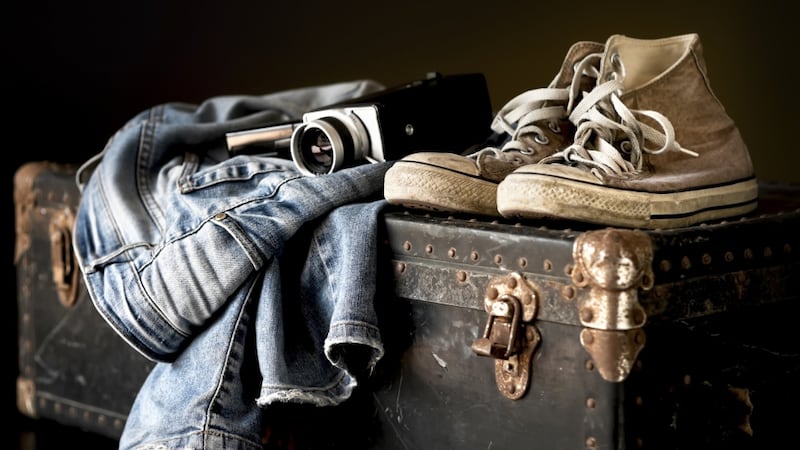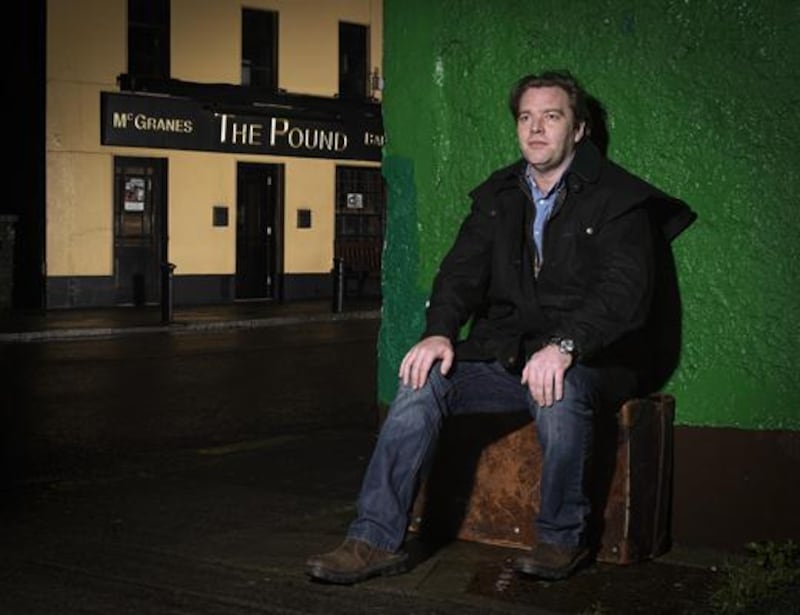Trundling along on the train from Victoria Station to the suburbs of Surrey in London in 2011, photographer David Monahan took some impromptu snaps of the man sitting across from him, who he had travelled from Dublin to visit.
The pair hadn’t known each other until a year previously, when Conor McMahon, a consultant from Donaghmede, became one of the first people leaving the country in search of work to sit for Monahan’s burgeoning series of emigrant portraits, taken in the days before their departure from Dublin.
“I had wanted to make a set of portraits of people who were leaving,” Monahan says of the original idea, “to document the faces and the places so people in ten years’ time, instead of looking at the statistics showing ‘x’ number left and where they went, that they could see what the people looked like, who they were, how they dressed.”

He wanted the viewer to be “arrested by the photographs”, to get them thinking both about how emigration affects them personally and the country as a whole. The scenes were meticulously staged, shot outdoors at night using stark studio lighting, with the sitter in a “historically heroic pose”, in a location that meant something to them. A battered leather suitcase was a recurring prop.
“This was meant to make a statement about the people, or help the people make a statement about themselves, that they were charging out there into the world rather than leaving by the back door,” he explains.


The 84 portraits he shot between 2010 and July of last year have been used by print and broadcast media around the world to illustrate the Irish downturn. Life-size prints formed a central feature at the 2012 Photo
festival in Dublin, which led to a 10-month long exhibition at the Immigration Museum in Melbourne last year, visited by more than 100,000 people.
But the act of leaving Ireland was just the first step on the emigrant journey for Monahan’s subjects and he didn’t want their story to end with that first photograph.
The monochrome pictures of McMahon taken on the train that day would form the basis of the next stage of Monahan’s On Leaving project, which has since taken him all over the world.
“When I got home and processed the work I realised it was a great way to follow up, investigating what has happened with these people, where they are now, how life is panning out for them,” he says.
A visit to Australia to coincide with the opening of the Melbourne exhibition provided an opportunity to catch-up with his sitters there, leading to an eight-week road trip with his family to take pictures of people now settled in cities across Australia and New Zealand.
He is just home from a similar trip around the US, Canada and South America, where he photographed sitters in their new homes from Toronto to Sao Paulo. Of the 84 subjects in his original series, he has been to visit about 50 so far, with a final trip to France, Spain and the Netherlands planned for next month.


The composition of these photographs is strikingly different to the colourful and highly theatrical set-up in the first series of portraits. Using black and white film and an old manual 6x6 camera, the subjects are captured from a waist-height angle while in casual conversation with Monahan.
“Making those first night-time shots, there was a tension there. It was night, in the dark, often cold, just before a momentous change in their lives. The very process of making the photograph often accelerated the emotions they had about the process of leaving. But all of that tension is gone now. They are living their new lives and getting on with it. I wanted that lack of fuss to be reflected in the photographs. The backdrop is not as significant as it was when they were leaving Dublin, which is why monochrome works. The focus is on the person, not the place.”
Having maintained contact with all his sitters since they departed, catching up with them was an emotional experience for Monahan, who now considers many of them friends. After hearing about their struggles and triumphs since leaving he is more certain than ever that emigration is not simply a lifestyle choice, but a “complex mix of desire, necessity and desperation”.


While some of his subjects struggled to settle or felt homesick at first, he has found the vast majority to be well-settled and happy. About 20 have returned to live in Ireland and others have been home and gone again.
“A lot of children have been born, some people have new partners, or have gotten married. It was very interesting to meet or hear about all these new people in their lives as I travelled,” he says.
It is timely perhaps that Monahan’s project is now winding to an end, as the Irish economy appears to improve and the numbers leaving seem to fall. A book of the work is forthcoming in October, with three exhibitions planned for the US next year.
After four years working with his subjects, he is emotionally invested in their futures. He hopes to see many of them back in Ireland again if they move home, but knows that some are gone for good.
“Many of these people left when things were bad, thinking they’d be away for a year or two. But they got stuck. There was nothing for them to come home to. They got on with things in the meantime, are achieving their potential in their new lives. Their children have the nationality of their new country and some have become citizens. Will they come home? I’m not so sure.”











